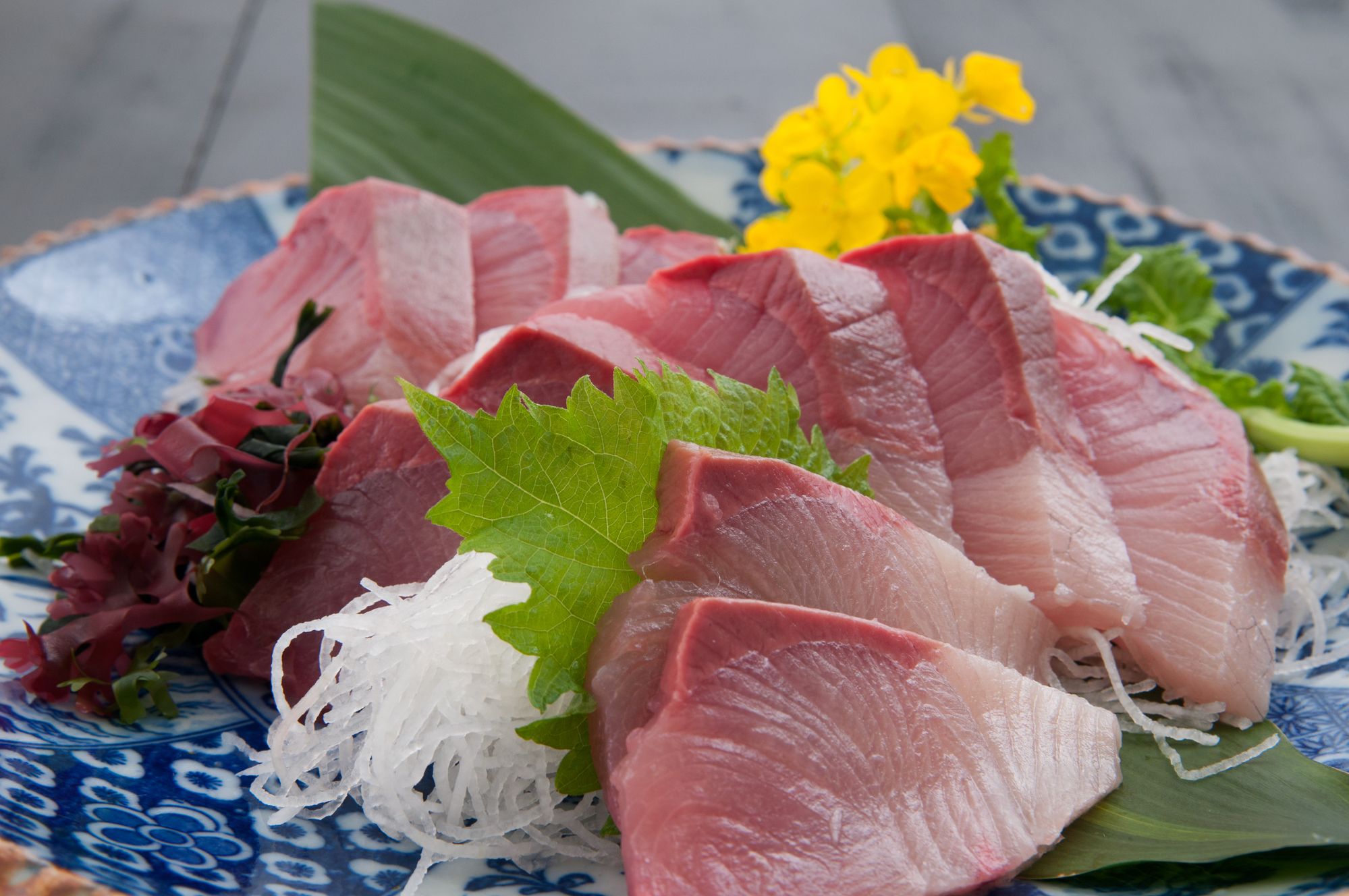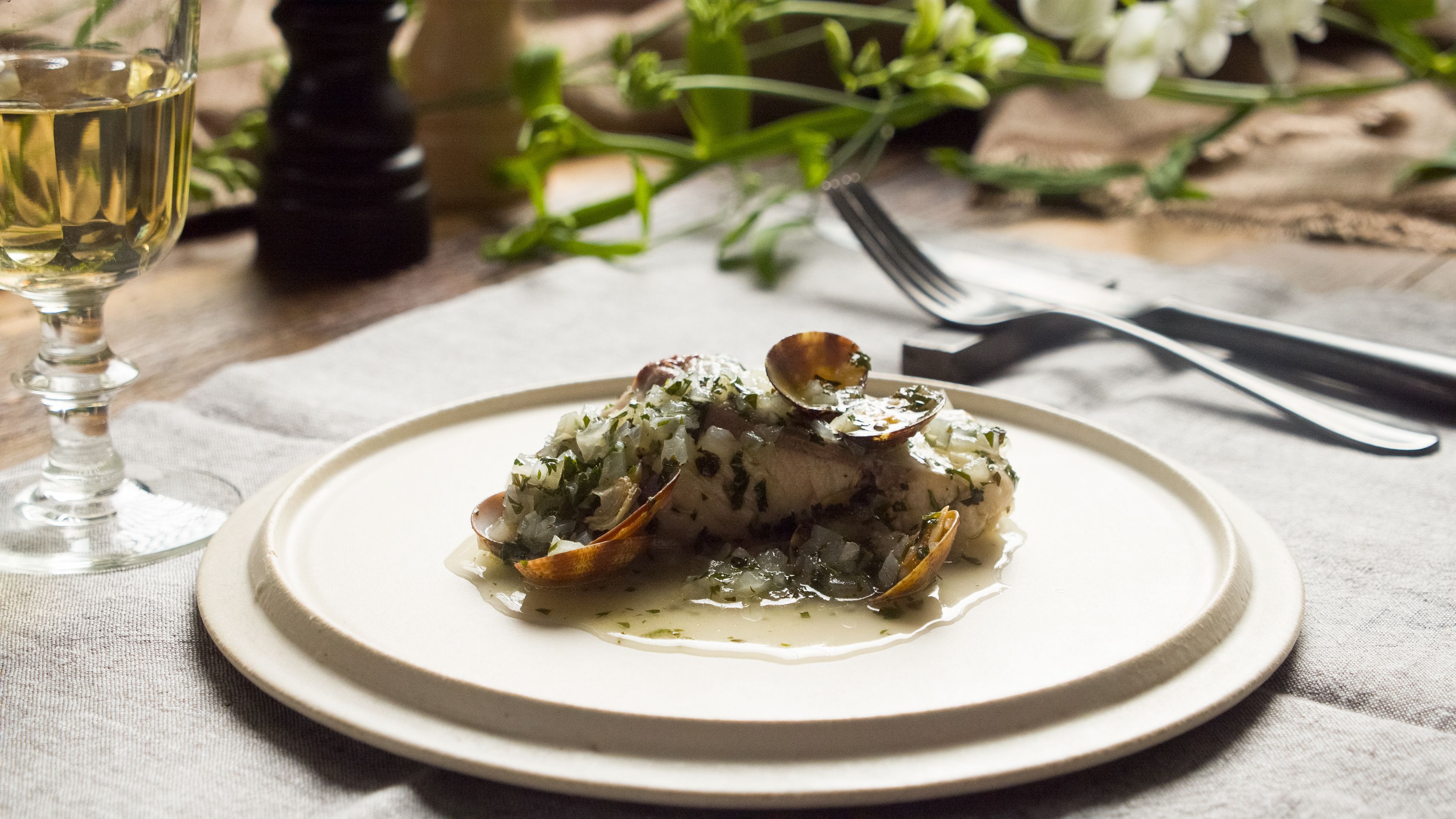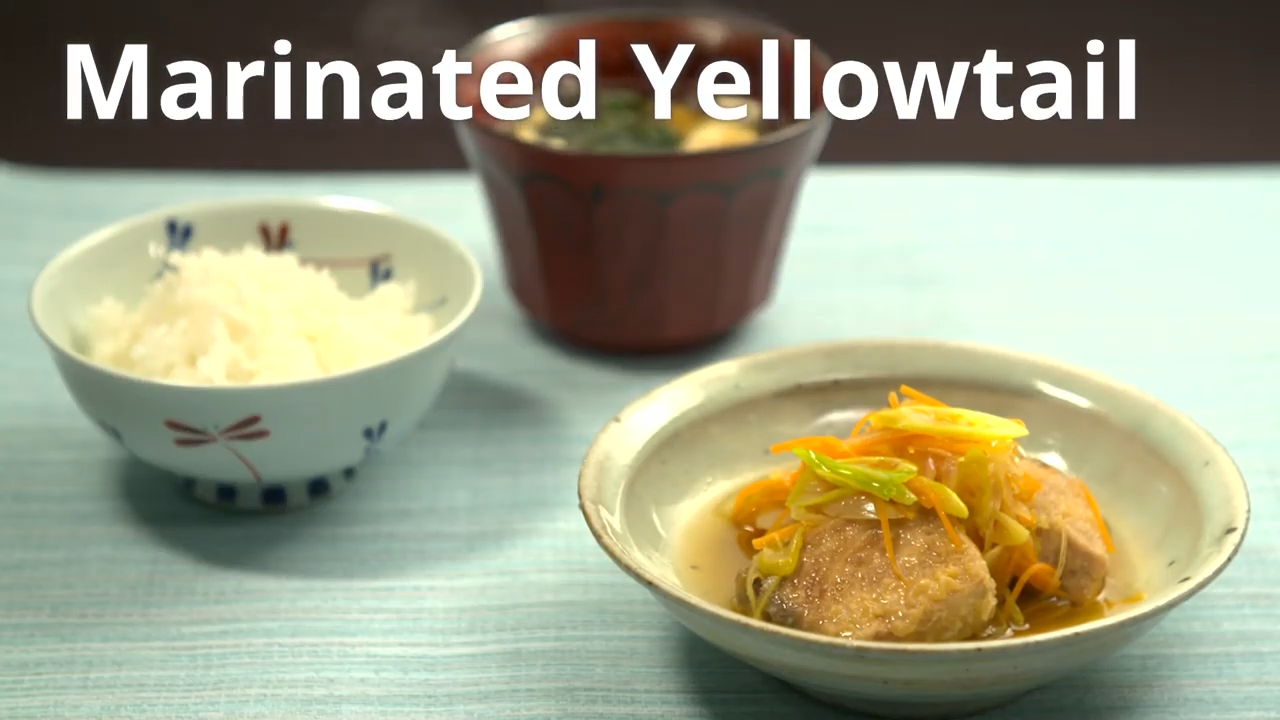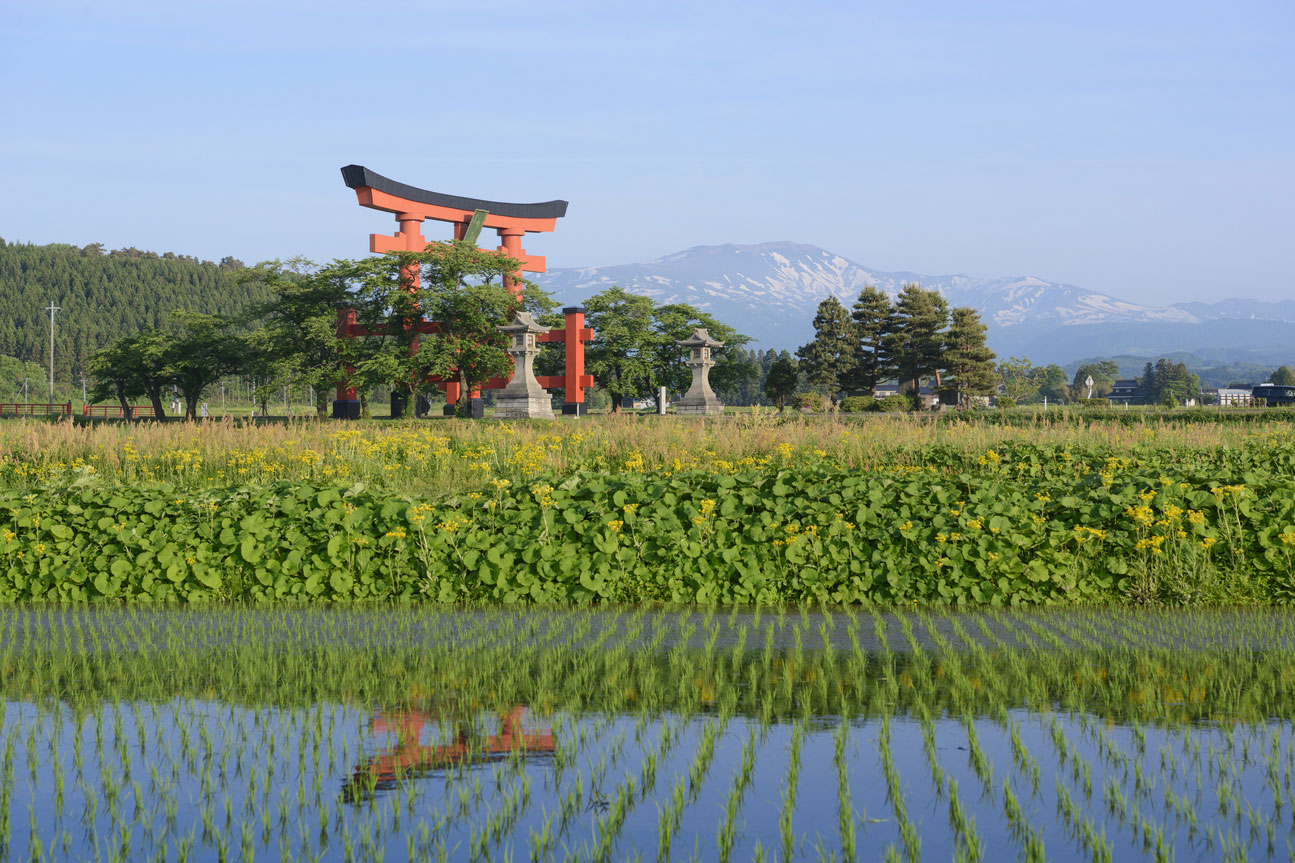
Beat the cold with warming recipes using nutritionally rich BURI that is in season in winter
In Japan, surrounded by sea on all four sides, you can encounter the premium seafood in each season and region. The representative fish in season in winter must be the yellowtail with its luringly rich flavor. Yellowtail, which is a unique variety to Japan, changes its appearance and flavor with growth, and even its name. It is greatly familiar to Japanese people as a fish that is called by different names as it grows larger. BURI (Yellowtail), which is the ultimate form of the matured fish is thought especially lucky, and is often eaten as a send-off or on a celebratory occasion. “Winter BURI” caught in the rough sea particularly in winter has a layer more fat and is well-shaped, and is special for the extra deliciousness it boasts.
All parts of the BURI, with its distinctive fattiness and rounded umami savoriness, can be used; so much so that it is said there is no part that need be thrown away. Various dishes have been devised, including sashimi, Teriyaki, stew and BURI Shabu-shabu. In addition to protein, it is rich in DHA which has effects such as vitalizing the cranial nerve and improving memory. Also, Omega 3 fatty acids like EPA that is very effective in inhibiting platelet aggregation and helps prevent coronary infarction and coronary heart disease, vitamin B group, vitamin D and iron. With high nutritional value, it has been considered a good analeptic from olden days. According to Miyuki Chizuka, chef and international Chinese herbalist, “BURI, which gives ‘warmth’ among the five natures, has a quality of gently warming the body”, and is a food best actively eaten in the winter, it seems, from the perspective of Chinese medicine, too.
BURI, which supplements “Qi” (energy) and “blood” (carrying nutrition), also works to supplement moisture, and it should be consciously eaten in particular in the dry season or when you feel a cold coming on. It works on the liver, spleen and kidneys among the five organs, is kind on the liver which is easily affected by stress, improves the working of the gut, and can give hope for anti-aging. ”
There are various methods of preparing yellowtail, including varied recipes for bringing out those effects. “With fresh BURI, I recommend carpaccio for enjoying the flavor as it is. It is delicious savored with the saltiness of black olives cut and scattered over it which help the function of the lungs and moisten the throat”. Also, remember to combine foods like BURI that supplement qi and blood with foods that improve circulation. With popular stewed dishes, aim for a synergistic effect warming the body in recipes using cumquats that circulate qi, and black vinegar that improves blood flow.
“Pour BURI with boiling water to make it marbled, then place in a frying pan with black vinegar, soy sauce, brown sugar, sake, water (two tablespoons of each) and one piece of ginger, cut into thin strips. Put on the lid and simmer for around three minutes at medium heat. Add a cumquat cut crossways, simmer for another five minutes, and then serve the finished dish. It will help bolster the body to beat the cold” Also, if you are interested in anti-aging, “Try scattering finely chopped Chinese chives, which circulate the blood and work on the ‘kidneys'over BURI Teriyaki. I also recommend it to people with shoulder stiffness”
“BURI and cumquat stewed in black vinegar” Photo provided by: Miyuki Chizuka
Originally a migratory fish, it was never a stable catch throughout the year, but thanks to advancements in breeding technology in the present day, fresh and good quality BURI is easily available anywhere in the world. Also, bred BURI can boast flavor not inferior to wild yellowtail due to characteristics in its feed. Methods of breeding have spread using citrus fruits as feed that are rich in vitamins, preventing the red muscle from turning brown by oxidation. “Fruit fish” are appearing more and more in various places in Japan, with their unique features of a faint citrus fragrance in the flesh, and of less raw fish odor. These include “Kabosu yellowtail” (Oita Prefecture) with improved antioxidative effect and elements of savoriness, and “Olive BURI” (Kagawa Prefecture) that, by adding olive leaves to the feed, suppresses lipids and improves components of sweetness. It is because of unique breeding technology making full use of Japan’s regionality that so many different BURI, brimming with individuality, can be enjoyed.
Since its production became stable, BURI has become a sustainable source, and in the future it is sure to become a popular food not only in Japan but around the world. Japanese BURI is delicious eaten raw as well as cooked, and its deep, exquisite flavor is waiting to be enjoyed to the full using various preparation methods.
Miyuki Chizuka, chef and international Chinese herbalist
After working in Shanghai and Boston, she moved to Tokyo. Her recipes promote body and mind connection, making the most of the benefits of seasonal ingredients. She runs the Meixue cooking school. She also contributes recipes to magazines and companies and is a published columnist. Her recent publications include "Illustrated Guide to the Medicinal Herbal Lifestyle" and "Handy Guide to Stay-At-Home Cooking" (both in Japanese).
http://meixue.jp
Instagram: @miyukichizuka
Recommended recipes using BURI
A simple analeptic recipe full of the umami savoriness of seafood
“BURI Salsa Verde”
Taste of the Japanese heart. Traditional BURI cuisine of simmering with daikon white radish
Simmered BURI with daikon radish
Water, kombu seaweed, soy sauce, sugar, mirin, radish chopped into chunks and thinly sliced ginger are put in a saucepan and boiled at a medium heat. Then, pre-marbled BURI is added and simmered until the water content has gone. Arranged in a dish and scattered with yuzu peel, the refreshing aroma is a plus.
Popular Cantonese cuisine with sweet and sour flavors adapted for BURI
Marinated Yellowtail(BURI)
The thick flesh of BURI is soaked in ginger juice, soy sauce and sake, then coated in starch and fried in vegetable oil. Stir-fry vegetables such as bell peppers and shiitake mushrooms with pineapple, mix with chicken soup, soy sauce, vinegar and ketchup, boil, and then add yellowtail. The melted starch gives it some substance to hold in the juicy umami savoriness.
A widely beloved sweet and spicy flavoring that is a standard in Washoku
BURI Teriyaki
Teriyaki of sweet and spicy-marinated BURI goes exceedingly well with rice. BURI is salted and wiped of excess water before coated in flour, grilled until golden brown, covered in sake, soy sauce, mirin, sugar and ginger juice and lightly boiled down. The trick is to serve quickly before the flesh dries out.
Simply fry in a frying pan! A side dish perfect for preparing in advance
Marinated Yellowtail(BURI)
Green spring onion cut on the slant, ginger sliced into rectangles, carrot and onion are stir-fried in vegetable oil then left to soak in a sauce mixed from noodle dipping sauce, water and vinegar. BURI coated in flour is grilled until golden brown, and mixed with the sauce to finish. A dish to sharpen the appetite that goes well with both rice and alcohol.
Reference: Public Relations Office, Public Relations and Evaluation Division, Minister's Secretariat, Ministry of Agriculture, Forestry and Fisheries, edited and published by aff, January 2019.
https://www.maff.go.jp/j/pr/aff/index_1901.html
Japan Aquatic Products Export Council
Photos supplied by: photolibrary,Miyuki Chizuka
Text: Eri Arimoto











